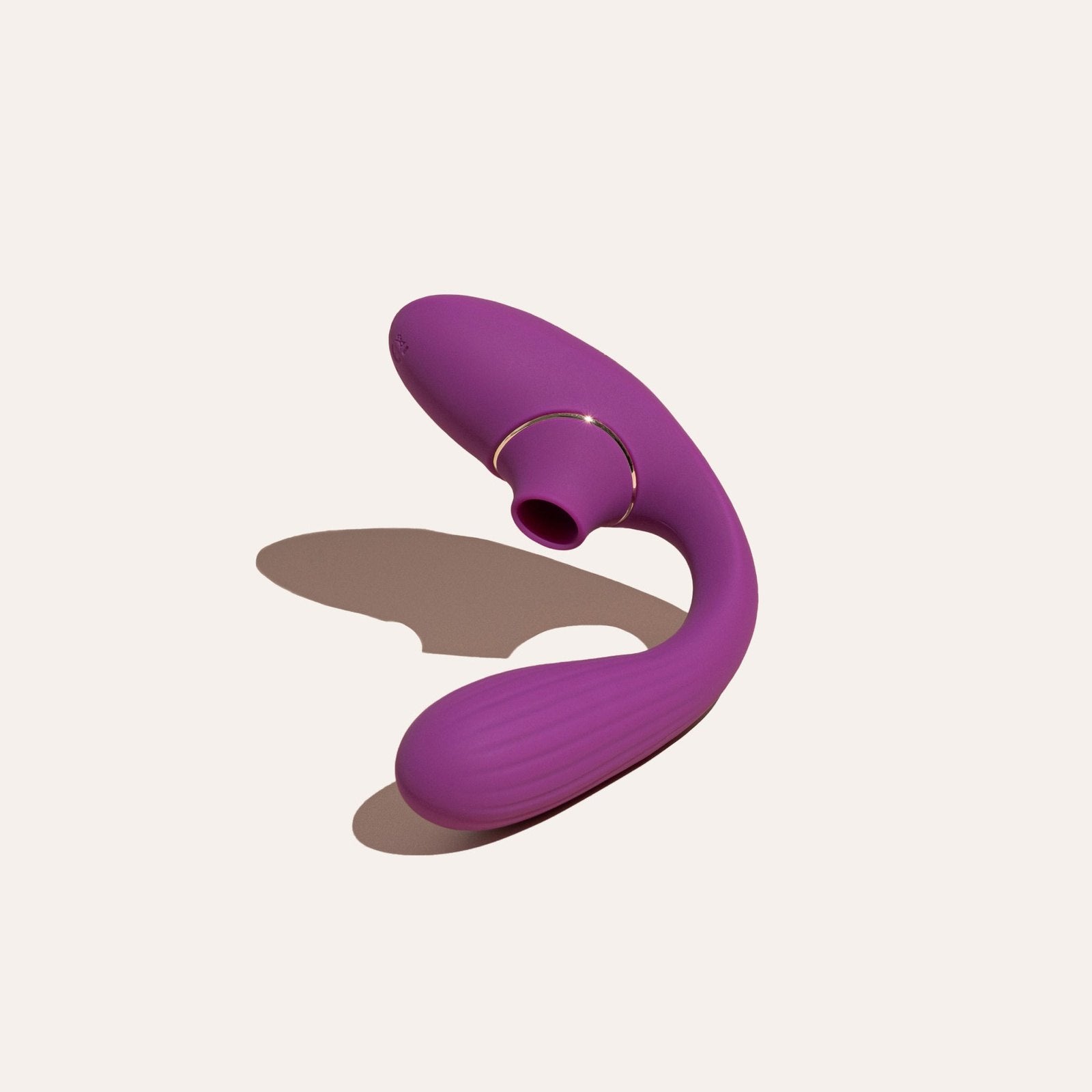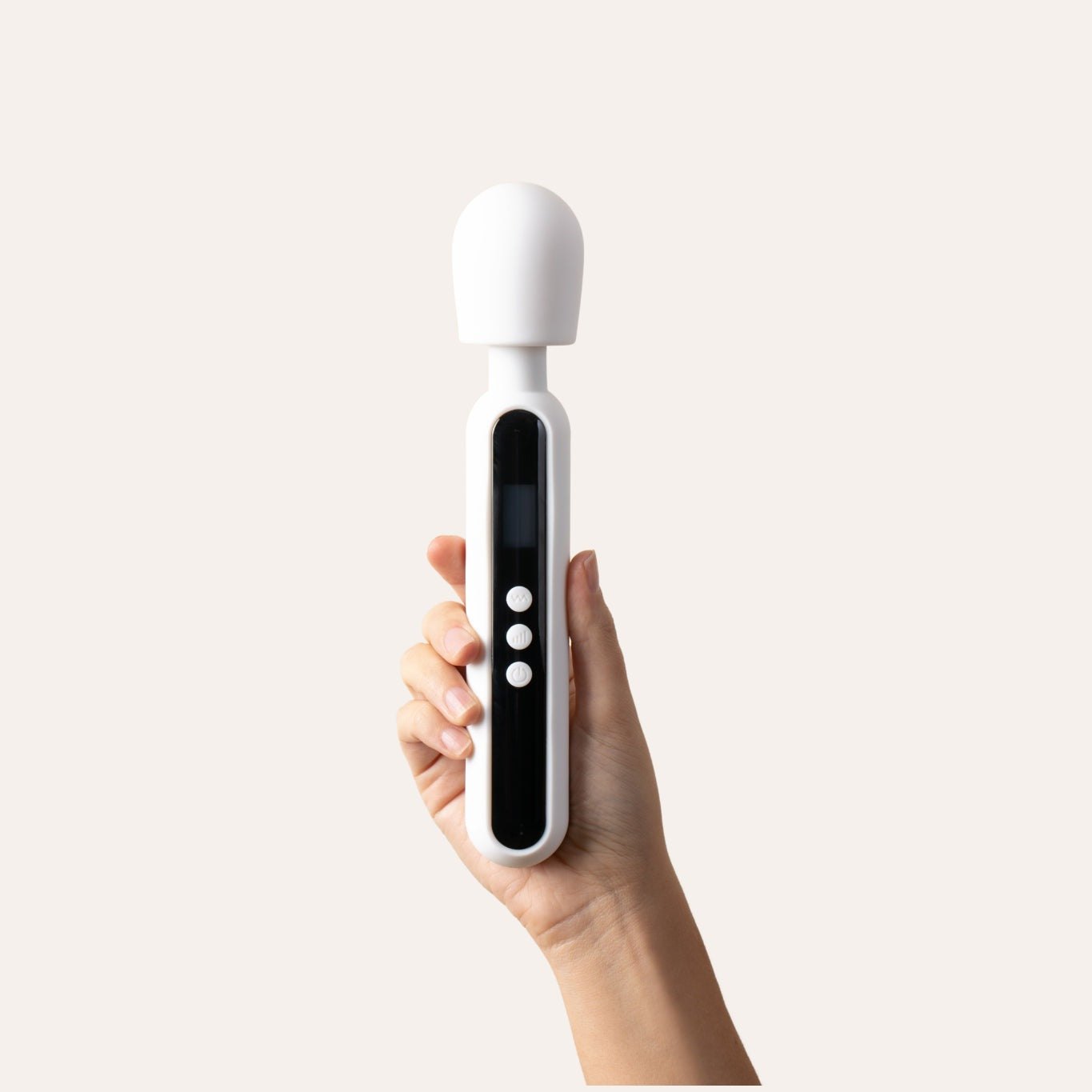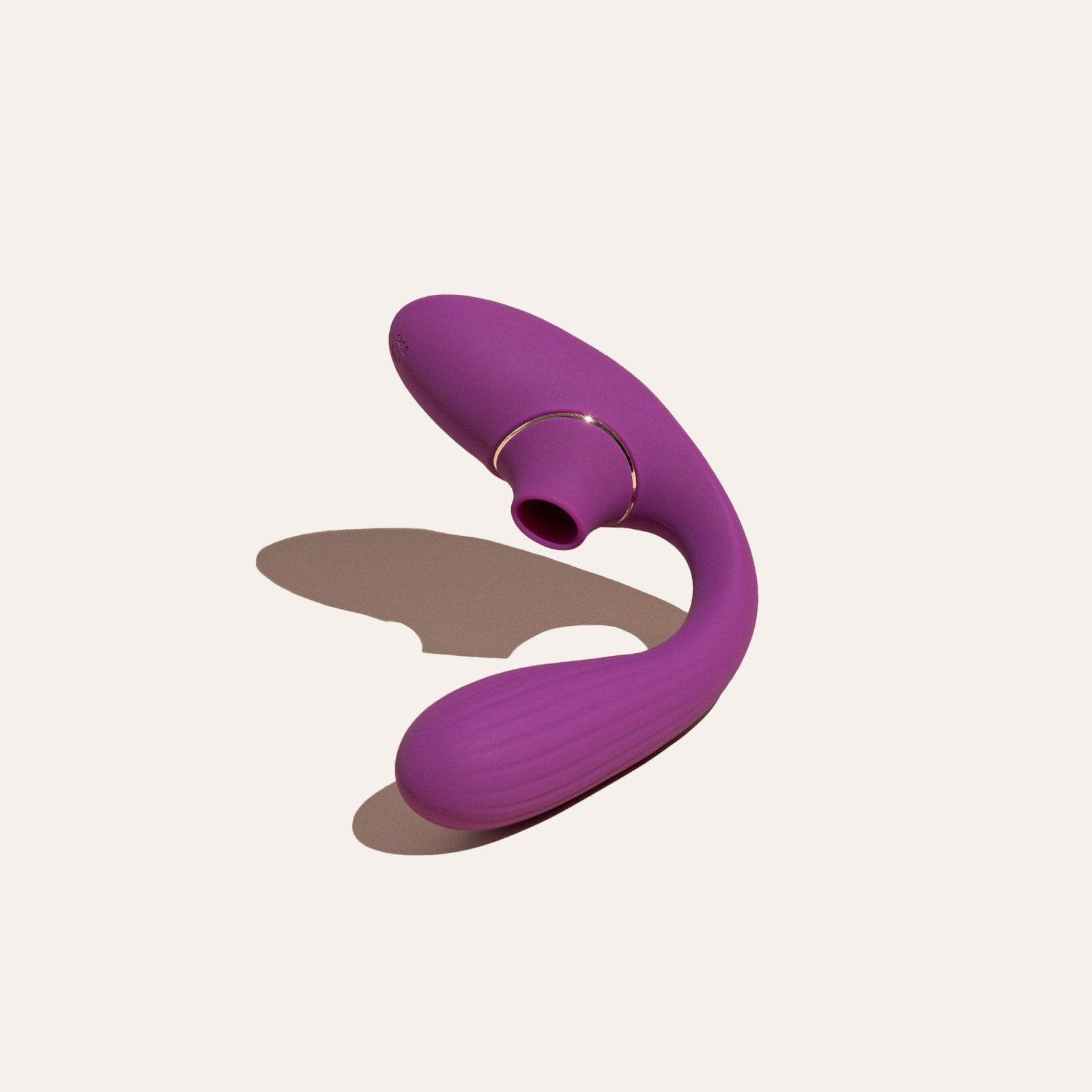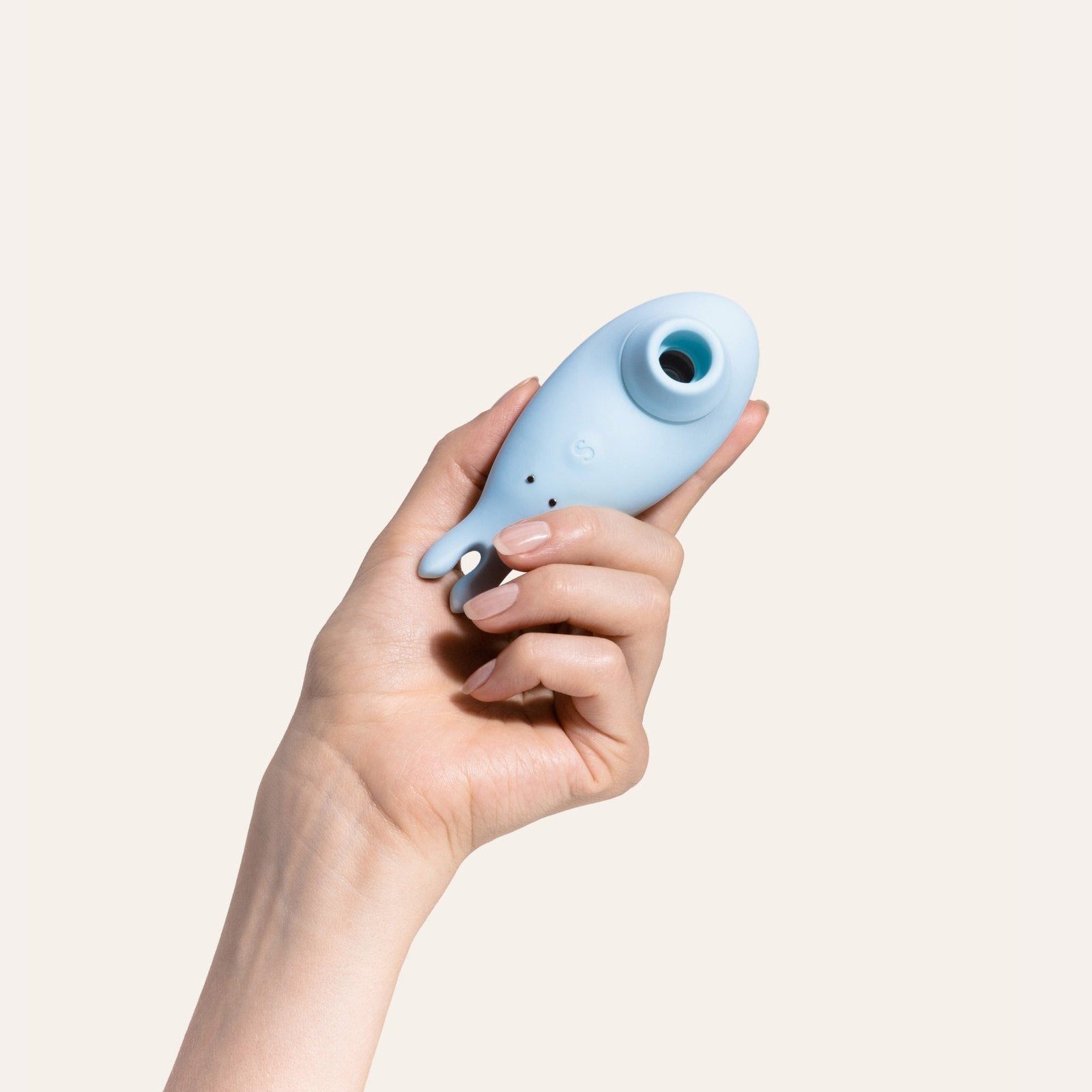Have you noticed that your clitoris isn't as sensitive as it used to be? Has the appearance changed? Are orgasms hard to come by? Perhaps you're dealing with vaginal dryness too? You might be dealing with clitoral atrophy.
Many of us might be navigating this condition without even realizing it. It's a silent pleasure thief, over time dulling pleasure sensitivity, taking with it arousal and orgasm. You might sexually feel "ok" but are, more and more, you're missing those fireworks moments.
Much like its counterpart, vaginal atrophy, this condition lurks in the shadows of women’s sexual health, often misunderstood or entirely unknown.
But, the solution could be more enjoyable than you think.
The secret to treating this condition might be nestled in your bedside drawer. Clitoral vibrators, the champions of the nightstand, offer more than just good times—they could be crucial in restoring clitoral sensitivity and rejuvenating tissues.
Let’s jump into how you can kick those pleasure-dulling symptoms to the curb and boost your sexual wellness.
Let’s try to get those fireworks back, shall we?
What Is Clitoral Atrophy?
You might be among the countless women asking themselves at some point, "Why has my clit lost its sensitivity?"
Clitoral atrophy occurs when “the clitoris stops responding to stimulation and begins to shrink. This can occur due to hormonal changes, disuse, and a lack of blood flow.”
And this is no small thing. The impact of clitoral atrophy on sexual pleasure is profound.
Since the clitoris is central to female pleasure, when this part of the body is less sensitive, you could be missing out on arousal, libido, and the ability to orgasm.
The clitoris isn't just the small visible part; it's a complex structure extending inside the pelvic area, integral to sexual arousal and pleasure. When atrophy occurs, the engorgement of clitoral tissues, essential for arousal, is compromised.
This can lead to symptoms ranging from reduced interest in sexual activity to challenges in achieving orgasm. Many might not recognize these as signs of clitoral atrophy, attributing them to stress, aging, or other lifestyle factors.
What Causes Clitoral Atrophy?
Understanding why clitoral atrophy occurs is crucial for prevention and treatment. This condition isn't just the result of one specific cause; it's often a combination of hormonal shifts and lifestyle factors that contribute to its development.
Hormonal Changes:
One of the primary culprits behind clitoral atrophy is the fluctuation in hormones, especially estrogen and testosterone. These hormones play a significant role in sexual health and arousal. Decreases in estrogen, commonly experienced during menopause, can lead to diminished blood flow to the clitoris, affecting its sensitivity. Similarly, lower levels of testosterone can impact libido and clitoral responsiveness.
Lifestyle Factors:
Physical inactivity and a sedentary lifestyle can impede blood circulation throughout the body, including the pelvic region. Poor blood flow to the clitoris is a significant factor contributing to atrophy. Additionally, smoking has been linked to vascular problems, further decreasing blood flow and potentially leading to atrophy.
Lack Of Use:
Just like any other part of the body, the clitoris benefits from regular use. Sexual arousal and activity increase blood flow to the clitoris, keeping the tissues healthy and responsive.
Regular sexual activity, whether through masturbation or with a partner, ensures that the clitoris remains engorged, sensitive, and functional. It's a case of "use it or lose it," where maintaining regular blood flow can help prevent the onset of atrophy.
In essence, clitoral atrophy doesn't have to be an inevitable part of aging or lifestyle. By understanding and addressing the underlying causes, such as maintaining a healthy hormonal balance and ensuring regular clitoral stimulation, it's possible to mitigate or even reverse the condition. Prioritizing clitoral health through an active sex life and healthy lifestyle choices is key to preserving sensitivity and pleasure.
Clitoral vs. Vaginal Atrophy: Knowing the Difference
While clitoral and vaginal atrophy may share some underlying causes, such as hormonal changes, they affect the body differently.
Clitoral Atrophy is marked by a decrease in clitoral sensitivity and responsiveness. It directly impacts sexual pleasure, making arousal and orgasm more challenging to achieve.
Vaginal Atrophy, on the other hand, involves thinning, drying, and inflammation of the vaginal walls. This condition can lead to discomfort during intercourse, increased urinary tract infections, and other vaginal health issues.
Both require attention and care, but the approaches to treatment and management may differ, highlighting the importance of recognizing their unique impacts on sexual and overall health.
Who Commonly Experiences Clitoral Atrophy?
Clitoral atrophy is a condition that can affect individuals at various stages of life, but it is most commonly observed in post-menopausal women.
The significant drop in estrogen levels during menopause is often a primary catalyst for this condition, impacting the clitoral and vaginal tissues by reducing their elasticity, lubrication, and blood flow.
However, it's not exclusive to the post-menopausal phase.
Those undergoing certain medical treatments, such as chemotherapy or surgeries that impact hormonal balance, might also experience symptoms of clitoral atrophy.
Can Clitoral Atrophy Be Reversed? Yes & Clit Stimulation Is A Treatment
The good news is that clitoral atrophy can often be reversed or significantly improved, especially with early intervention. Treatment typically focuses on addressing the underlying causes, such as hormonal imbalances or reduced blood flow, and incorporating lifestyle changes to enhance clitoral health.
Hormone Therapy: For those experiencing atrophy due to hormonal changes, especially post-menopause, hormone therapy may be recommended to restore estrogen levels. This can help improve tissue health and increase blood flow to the clitoris.
Regular Sexual Activity: Engaging in regular sexual activity, including masturbation, can improve blood circulation to the clitoral area, promoting tissue health and sensitivity.
Use of Clitoral Vibrators: The use of clitoral vibrators can be particularly beneficial. These devices not only encourage blood flow through stimulation but can also help in rediscovering pleasure, contributing to overall clitoral health.
Lifestyle Adjustments: Quitting smoking, maintaining a healthy diet, and regular exercise can improve vascular health, thereby enhancing blood flow to the genital area and potentially reversing symptoms of atrophy.
Discussing clitoral atrophy with your doctor is key to finding the right treatment. They can offer insights into hormone therapies, lifestyle changes, or sexual aids that might help. Remember, opening up about changes in sensation or arousal is essential for your well-being. Don’t hesitate to seek advice and explore your options.
The Joyful Role of Clitoral Vibrators in Treating Atrophy
Biiiiiig news: Vibrators aren’t just sex toys, they are sexual wellness tools!
In a 2016 study, two-thirds of post-menopausal participants experienced a notable enhancement in vaginal lubrication, arousal, and genital sensation after incorporating vibrator use into their routine over three months.
The secret? A boost in blood flow, aided by the vibrator, is a critical factor in revitalizing clitoral health and sensitivity.
Vibrators boost blood circulation to the clitoral area. This is crucial for maintaining sensitivity and health. With increased blood flow, the tissues get nourished and become more responsive. It's a simple yet powerful effect.
Read More: The Best Vibrator For Older Women
So, vibrators aren't just for pleasure. They're therapeutic tools.
For many dealing with clitoral atrophy, vibes bridge the gap back to sexual vitality.
The Best Clitoral Vibrator For Clitoral Atrophy = Suction Vibes
If you’re new to vibrators you might be wondering which vibe is best for you and clitoral atrophy.
You want to opt for vibes that are designed for the clit (or vulva) versus vibes like dildos or g-spotters. You want all the attention on the clitoris.
Additionally, clitoral atrophy can cause the tip of the clit to become less pronounced, making it difficult for standard vibrators to offer effective stimulation.
This is why we recommend powerful air pulse clit vibrators like Aura.
These types of vibrators target the entire clitoris glans (the bit that can be seen on the side) and send powerful vibrations throughout the pelvis into the extensive clitoral structure beneath the surface.
Because these special vibrators use air suction, they are profoundly useful for increasing blood flow, natural lubrication, arousal, and orgasms.
The beauty of clitoral suction toys lies in their ability to provide comprehensive stimulation, ensuring that even if the clitoral tip is less accessible due to atrophy, pleasure is not compromised.
The indirect stimulation offered by these toys can lead to profound orgasms and, with regular use, may help in reversing the effects of clitoral atrophy, bringing sensitivity back to the forefront.
A Close Runner-Up: The Wand
Suction isn’t for everyone. Some just want a powerful, targeted vibratory massage. That's where the powerful design of wand vibrators comes in.
These toys are among the strongest vibrators on the market.
Some ladies opt for the classic Bewitch'd wand massager, some prefer the powerful suction feature of Aura, but many, opt for both.
These two pleasure products are crowd-pleasers. And, at BerryLemon, they are exceptionally popular among older ladies or those experiencing vulva changes.
Think of Sex Toys as Sexual Wellness Tools
Just like regularly hitting the treadmill can whip your body into shape, using a vibrator might just do wonders for your sexual wellness. Think of vibrators not just as toys but as tools for boosting your sexual vitality, desire, and enjoyment.
It's like setting up a workout plan for your sexual health — a bit of dedication and routine can really pay off.
And hey, for those looking to explore vibrators tailored for clit stimulation, snag 15% off with the code BESTVIBES15 at checkout.
That’s all for now! Peruse our shop and other articles below.
XOXO










